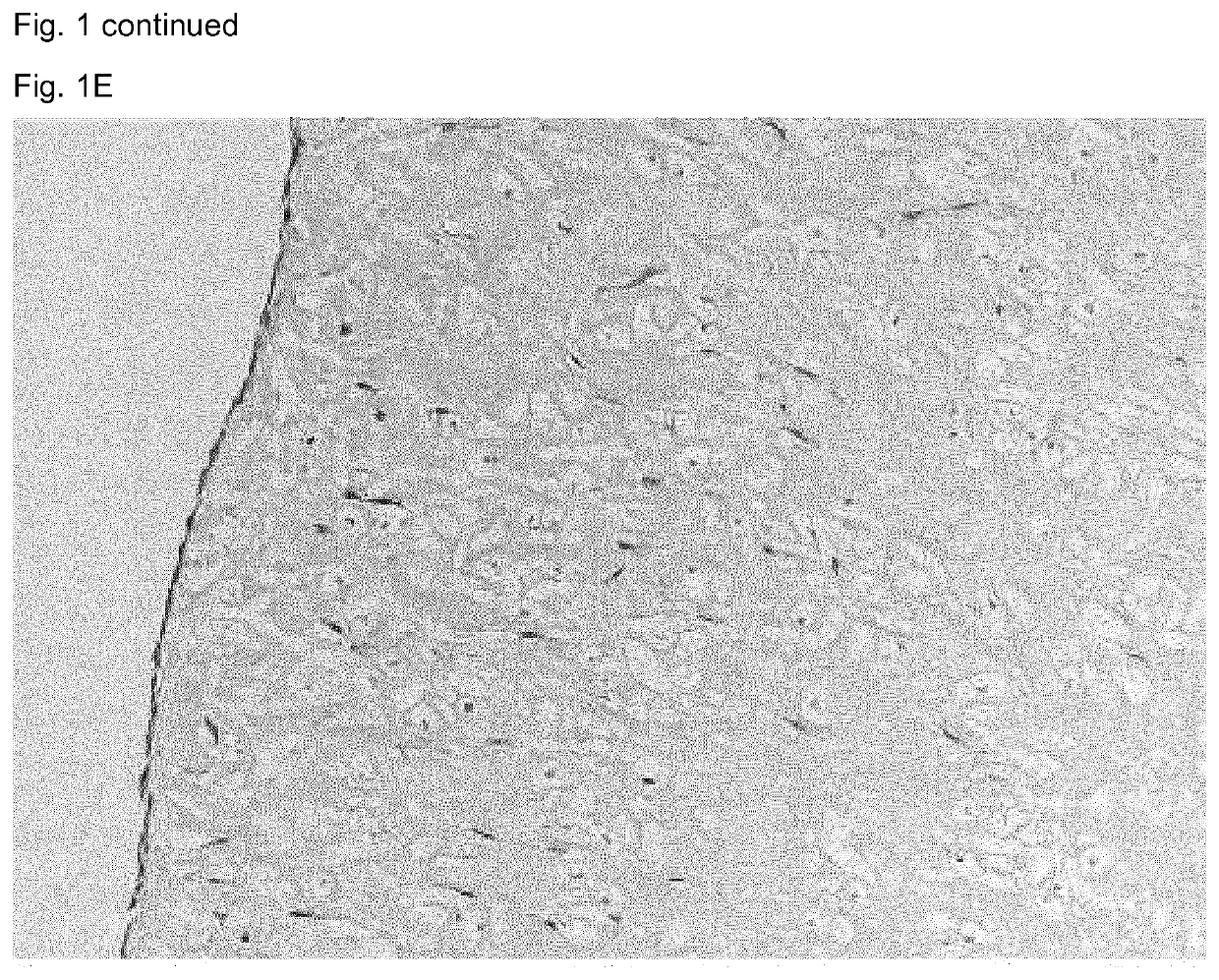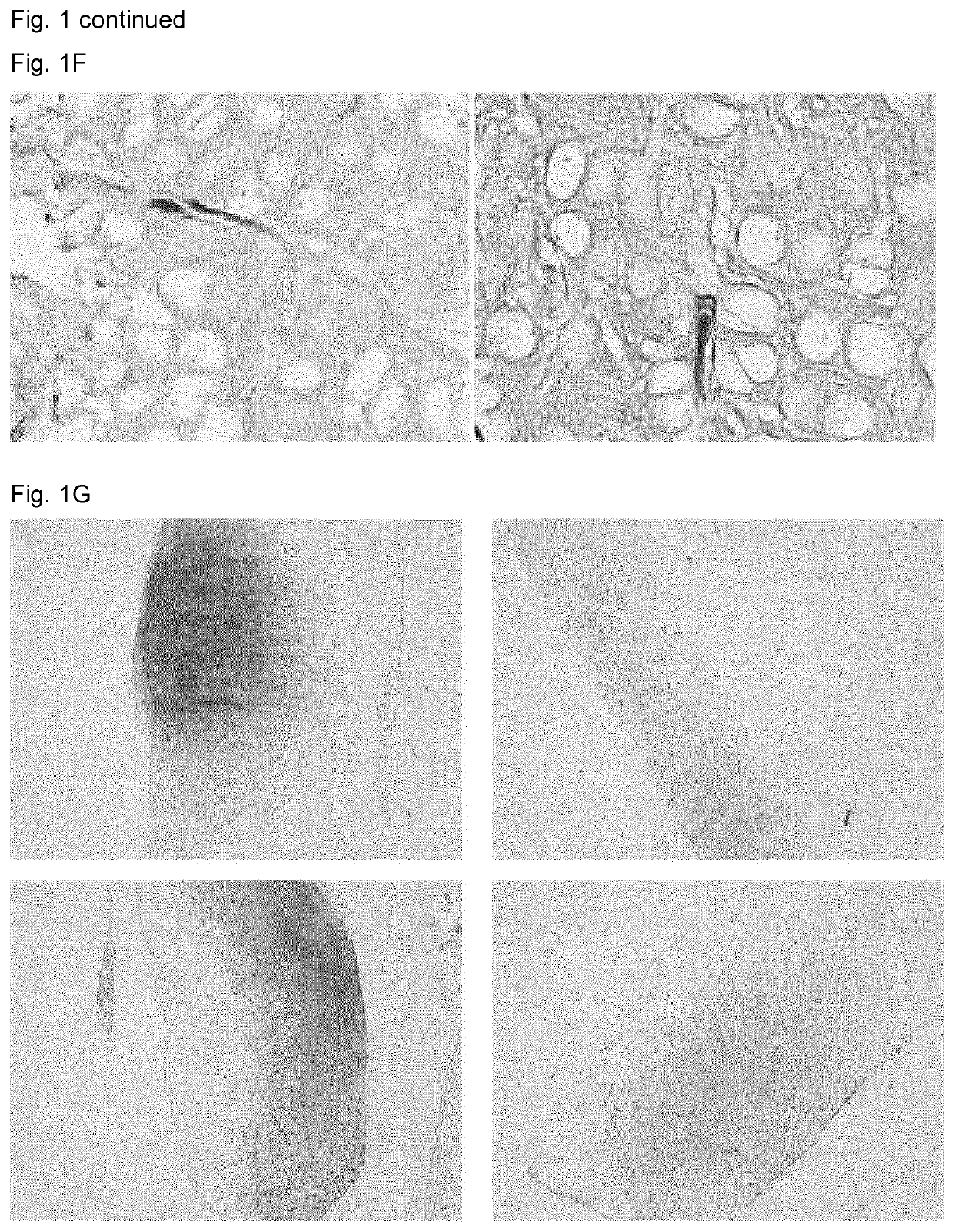Elastin reduction allowing recellularization of cartilage implants
a cartilage implant and cartilage technology, applied in the field of tissue implants, can solve problems such as not being expected to raise an immune reaction
- Summary
- Abstract
- Description
- Claims
- Application Information
AI Technical Summary
Benefits of technology
Problems solved by technology
Method used
Image
Examples
example 1
rization with BMSCs by Dynamic Seeding
[0073]The outer ears of 12-week-old calves were washed with water and the perichondrium, skin and muscle were removed using a scalpel till only the cartilage remained. Subsequently, biopsies of 6 mm diameter and about 1 mm height were obtained from the auricular cartilage using biopsy punches, hence each sample being about 30 mm3 in volume.
[0074]The following protocol was then employed for removal of the cells and elastin fibers, the volumes given applied to batches of approximately 20 samples unless specified otherwise. First, the samples were rinsed thrice briefly with 40 ml In some embodiments of the invention 3696 Grade I deionized water following referred to as deionized water, to remove debris from the isolation, such as loose pieces of skin. If necessary, samples were frozen in 20 ml of deionized water at −20° C. for storage. Then samples were sterilized with 20 ml of 5% hydrogen peroxide for 60 minutes at 37° C. Subsequently, the samples...
example 2
hondrogenesis after Injection
[0078]Some areas of cartilage are difficult to reach for cells by migration, for example the cartilage of the outer ear is surrounded by a dense perichondrium layer. As shown by Utomo et al., 2015 an entire ear can be decellularized using elastase. The perichondrium is tightly attached to the cartilage and removal of it without damaging the cartilage structure is not feasible.
[0079]To test whether recellularization of an entire ear is feasible, bovine auricular cartilage samples without necessitating removal of the perichondrium were recellularized with chondrogenic cells by injection through the perichondrium.
[0080]The outer ears of 12-week-old calves were washed with water and skin and muscle were removed using a scalpel till only the cartilage with its intact perichondrium remained. Subsequently, square biopsies of 15 mm side length were obtained from the auricular cartilage using a scalpel with each sample being about 2-4 mm in height (including peri...
example 3
hondrogenesis in Joint Model
[0085]To determine if elastase-treated elastic cartilage is suitable to repair cartilage defects, it was used to fill defects in a model of articular cartilage damage. First, the outer ears of 12-week-old calves were washed with water and the perichondrium, skin and muscle were removed using a scalpel till only the cartilage remained. Subsequently, biopsies of 6 mm diameter were obtained from the auricular cartilage using biopsy punches and cut to a height of either approximately 0.4 or 1.2 mm.
[0086]The protocol employed for removal of the cells and elastin fibers was identical to that described in example 1. The volumes given applied to batches of about 20 samples unless specified otherwise.
[0087]After removal of the cells and elastin fibers, half the samples were then placed at the bottom of a 0.3 cm2 well (one sample / well, 96 well plate) and covered with 500.000 chondrogenic cells per sample as a solution in 200 μl of chondrocyte expansion medium (DMEM...
PUM
| Property | Measurement | Unit |
|---|---|---|
| pH | aaaaa | aaaaa |
| temperature | aaaaa | aaaaa |
| temperature | aaaaa | aaaaa |
Abstract
Description
Claims
Application Information
 Login to View More
Login to View More - R&D
- Intellectual Property
- Life Sciences
- Materials
- Tech Scout
- Unparalleled Data Quality
- Higher Quality Content
- 60% Fewer Hallucinations
Browse by: Latest US Patents, China's latest patents, Technical Efficacy Thesaurus, Application Domain, Technology Topic, Popular Technical Reports.
© 2025 PatSnap. All rights reserved.Legal|Privacy policy|Modern Slavery Act Transparency Statement|Sitemap|About US| Contact US: help@patsnap.com



